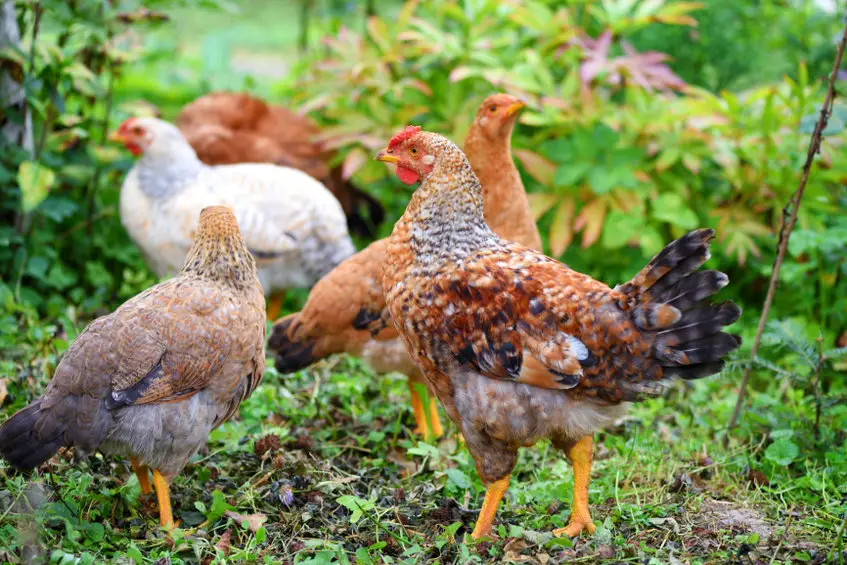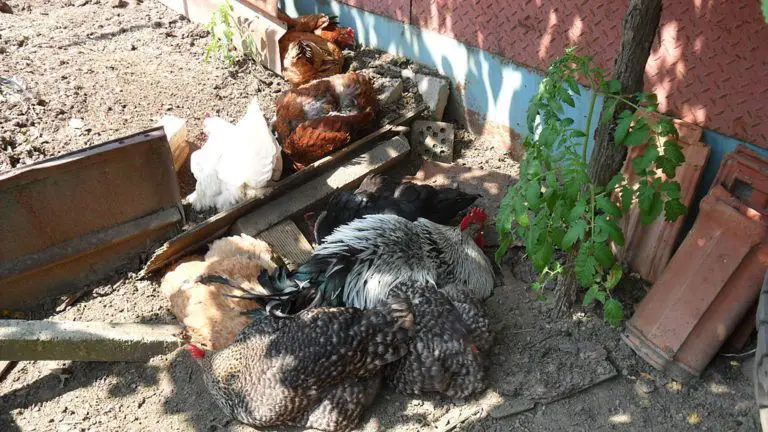Squawk Squawk! Insights Into The Behavior And Communication Of Chickens
Chickens are fascinating creatures, and diving into their behavior can give you a whole new appreciation for them. While some might see chickens as simple animals, their actions actually reveal a lot about their needs, emotions, and even their ‘personalities’.
Observing and understanding these behaviors can really open doors to better caring for and interacting with them.
There’s a lot of misinformation floating around about why chickens do what they do. Sure, they peck at things a lot, but that’s not just because they’re curious.
Pecking can mean a bunch of different things depending on the situation—like establishing pecking order or showing interest in something new. Getting the facts straight about chicken behavior helps us connect with them on a level that goes beyond just providing food and shelter.
The environment plays a crucial role in how chickens behave. A well-arranged space offers them the opportunity to express their natural behaviors, whether that’s dust bathing, foraging, or even just hanging out with their feathered buddies.
A cramped, stressful environment can lead to negative behaviors like feather pecking or aggression. So, understanding the space chickens live in provides insight into shaping their actions positively.
Being in tune with how chickens behave has a host of benefits. From spotting early signs of illness to ensuring that they live happy, fulfilling lives, keeping an eye on these behaviors is key. Spend time with a flock and you’ll start noticing little patterns and quirks that tell you a lot more than words ever could.
Whether you’ve got a backyard coop or a larger flock, understanding chicken behavior helps in creating a harmonious living environment for these amazing birds.
Decode the Chirps: Understanding Chicken Communication
Chickens aren’t just about clucks and caws. They have a complex way of communicating that goes beyond what meets the eye or ear. Their communication isn’t merely random noise; it’s essentially an essential toolkit for maintaining social structure and safety among the flock.
Each vocalization holds its own meaning. From indicating that a predator is near to signaling food has been found, chickens have specific calls for different scenarios. A distinctive alarm call will send chickens scrambling for safety, while contented clucking during feeding times keeps everyone at ease and cooperative.

But it’s not just about the sounds. Their body language communicates volumes too. When a hen fluffs her feathers and struts around, she’s not just preening; she might be asserting dominance or trying to catch a mate’s attention.
A rooster’s posture can indicate everything from challenge to confidence, letting other chickens understand their place in the hierarchy.
Chickens also excel in silent communication. Their precise movements and interactions convey messages, whether it’s submissive gestures or subtle nods that communicate peace within the flock.
Understanding these nonverbal cues is crucial because they form a significant part of how these birds interact with each other, highlighting the harmony or discord in their little community.
Diving Deeper: Methods and Patterns of Chicken Communication
Chickens are masters of expressing themselves through various communication methods. Not all communication needs to be vocal, and in a chicken’s world, numerous ways get the job done.
Whether it’s through distinct sounds or subtle body signals, they consistently convey important information to their flock members.
One fascinating aspect is how they maintain their social interactions through established patterns. These patterns often revolve around their social structure, with each chicken knowing exactly where it stands in the hierarchy.
A peck on the back or a sidelong glance plays a part in reinforcing this structure, helping maintain order within the group.
The hen house operates on a careful balance of power and agreement, where the pecking order dictates who eats first and who roosts where. This isn’t just a random act of hierarchy; it’s pivotal for survival and minimizing conflict within the flock.
Observing these behavior patterns from a distance can reveal a lot. For instance, when a lower-ranking chicken approaches food, it will wait for its turn, understanding its place without the need for physical reinforcement every single time.
Such interactions remind us that each behavior follows certain rules that ensure peace and cooperation.
Paying attention to these social cues can be not only fascinating but also immensely valuable. It helps in managing a flock that thrives on understanding and respecting these inherent patterns of communication.
Insight into these dynamics guides us in creating an environment where chickens feel safe and understood.
Understanding the Psychology Behind Chicken Behavior
Chickens are much like us in that they possess a fascinating psychological landscape that governs how they act and react to the world around them. Delving into their psychology uncovers the blend of instinctual and learned behaviors that make them so captivating.
Each chicken has its own personality quirks, shaped by both genetics and environment. Some hens are naturally more curious, while others may be more reserved.
Recognizing these differences not only helps in managing the flock better but also enriches your experience with them.

Common actions, like dust bathing or foraging, serve not just practical purposes but also fulfill innate psychological needs. These activities can reduce stress, contribute to physical health, and ensure emotional wellbeing. When deprived of such activities, the flock can become anxious or even show behavioral disorders i.e. pecking and the like.
Understanding the dynamics at play within a group of chickens is akin to grasping a complex social play. You’ve got the bold ones, the followers, and everything in between.
And like other animals, chickens value social interactions that meet their psychological needs for companionship, security, and status.
By tuning into the psychological undercurrents that drive chicken behavior, we gain a more holistic view of these creatures—not just as animals we look after, but as beings with their own intricate emotional world. This understanding can vastly improve how we care for and interact with them.
A Call to Action: How Humans Can Communicate with Chickens
Chickens might not speak our language, but that doesn’t stop us from having a meaningful interaction with them. Engaging effectively with chickens can significantly strengthen your bond and improve their overall well-being.
One of the most effective ways to connect with your flock is through observation. Spend time noticing their behavior and vocalizations. You’ll start to understand individual personalities and what each sound or movement might mean.
This attentiveness helps in recognizing when things stray from the norm, allowing you to address issues promptly.
Interacting with chickens also means respecting their social structure. Try to approach them calmly and steadily, maintaining a demeanor that doesn’t disrupt their established order. Quick, unpredictable movements could cause stress or upset the balance within the group.
Offering treats can be a useful tool in building trust. Chickens are generally motivated by food, and associating you with positive experiences can make them more receptive and less wary over time. However, moderation is key to avoid health issues.
Understanding human impact on chicken communication means recognizing how our actions—like alterations to their environment—can affect their behavior. A calm, routine-driven setting fosters communication that’s relaxed and positive, enhancing our mutual understanding.
By embracing these strategies, we can engage with chickens in ways that are rewarding for both sides, building a bridge of understanding and respect between our two worlds.
Thanks for visiting our site and good luck with your flock!







